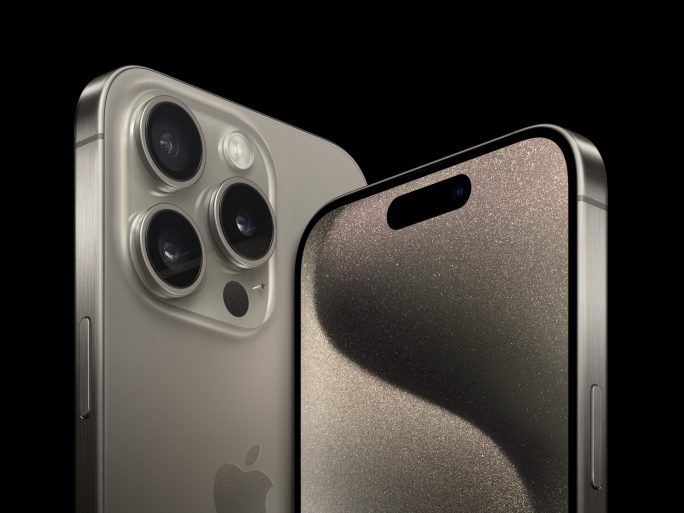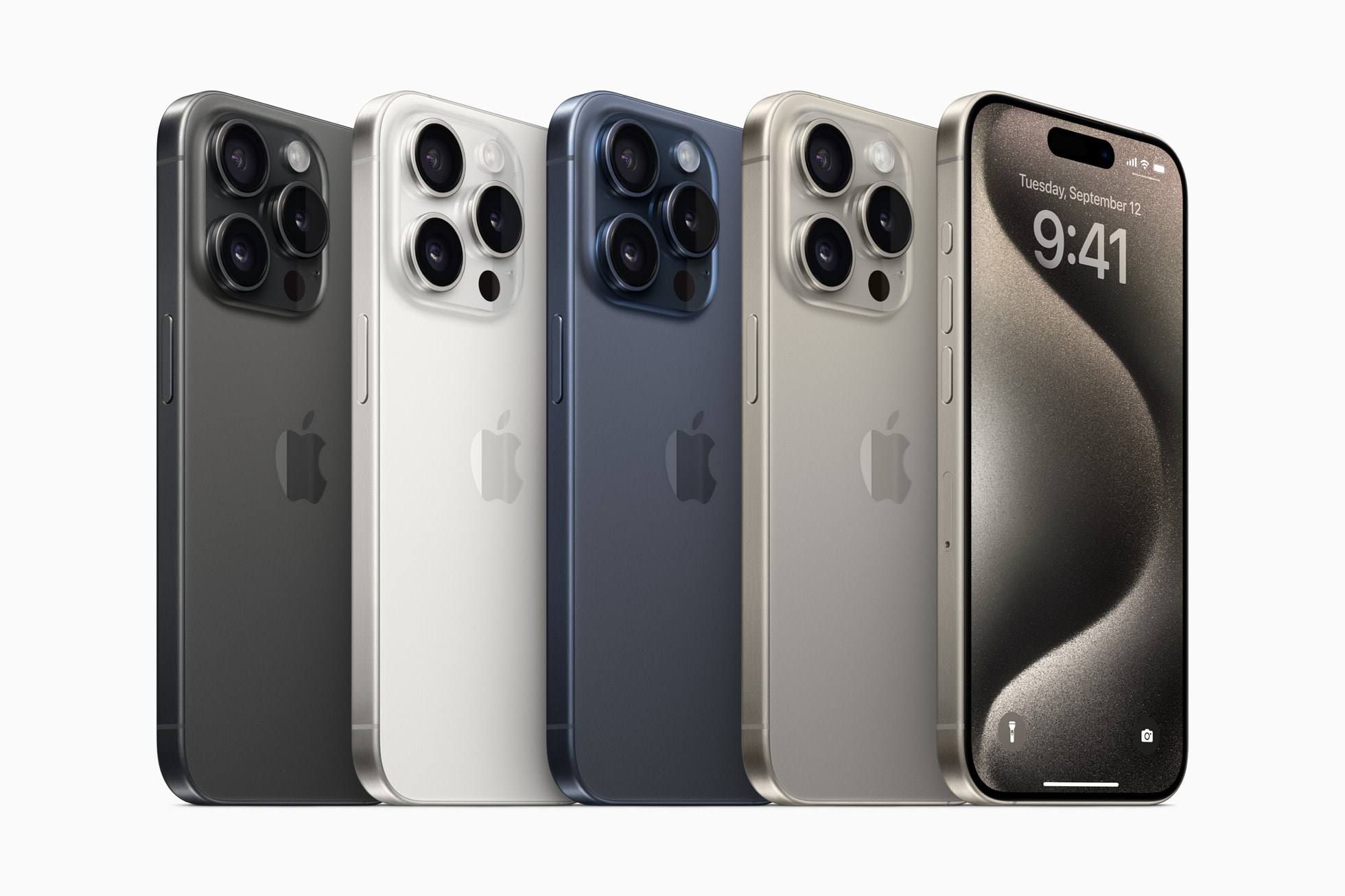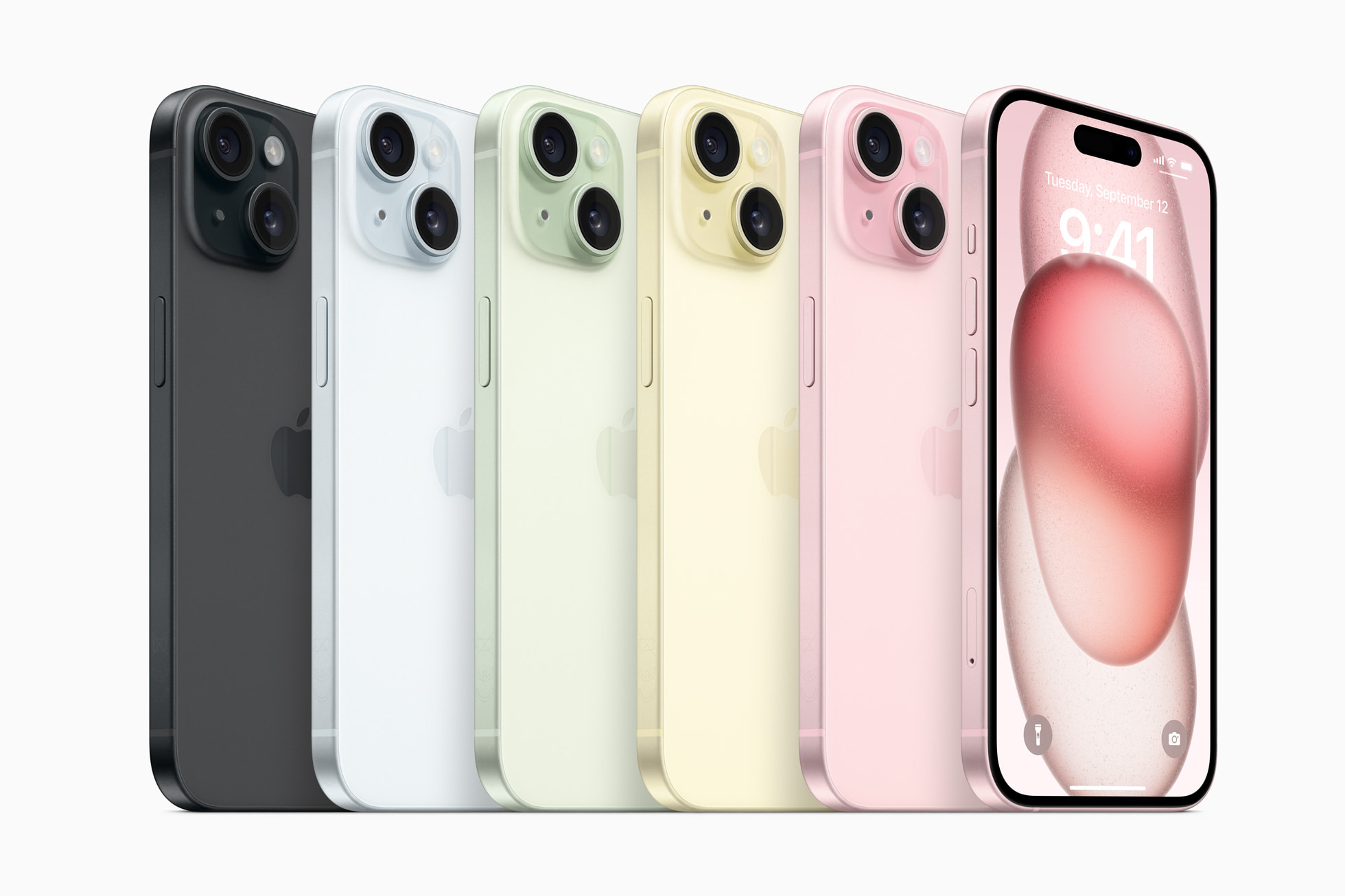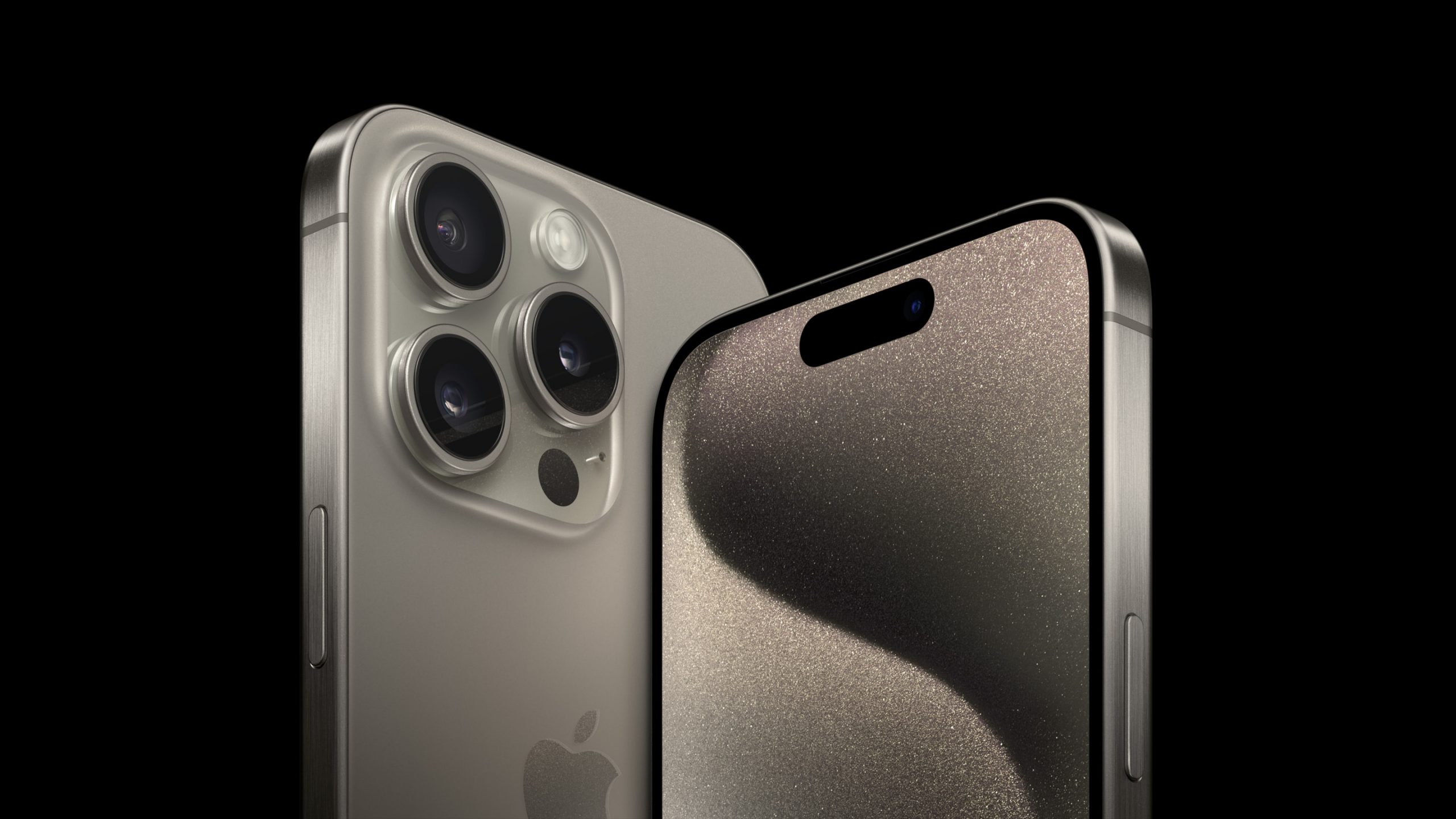Apple Axes Lightning Cable With iPhone 15 Launch

Tech giant Apple finally delivers a USB-C port for iPhone 15 portfolio, and bucks trend by mostly not raising retail prices
Apple hosted its Wonderlust event at its headquarters in Cupertino, California on Tuesday event, where the firm unveiled its latest smartphone and wearable portfolio.
At the event hosted by Apple CEO Tim Cook, Apple officially unveiled the iPhone 15 portfolio, as well as the Apple Watch Series 9, and the Apple Watch Ultra 2.
Overall, most of the handset and wearable changes were incremental, but the big takeaway from the event was Apple’s decision to drop its legacy Lightning port, and adopt the USB-C universal charger port.

Image credit Apple
USB-C port
The decision to drop the Lightning port was forced upon Apple, after the European Union in October 2022, after more than a decade of trying, finally agreed a common (or universal) charging standard (USB-C) for all mobile devices.
That meant that from Autumn 2024, all electronic devices would need to support USB-C charging, and Apple has opted to make the switch well before that deadline.
Soon after the EU decision, Greg Joswiak, Apple’s senior vice president of worldwide marketing reluctantly told The Wall Street Journal Tech Live conference, “obviously we’ll have to comply.”
Apple has only ever undertaken one port change before this, and that back in September 2012 when Apple changed from its proprietary 30 pin connector to the lightning connector with the iPhone 5.
![]()
So now the lightning connector is officially dead (except for previous models), and Apple has moved to USB-C, which everyone else in the smartphone industry has had for a couple of years now.
On Tuesday Apple introduced new AirPods Pro (2nd generation) with USB‐C charging capabilities, and the switch to USB-C now means that a single cable can be used to charge an Apple Mac, iPad, AirPods, and the iPhone 15 lineup.
The one disappointing aspect with the arrival of USB-C, is that Apple has not opted to implement fast charging, so it will still take 1.5 to 2 hours to charge a phone.
Also data transfer speeds have only been improved for the iPhone 15 Pro models.
Apple iPhone 15
Apple introduced its entry level iPhone 15, and iPhone 15 Plus handsets, which are the same size as last year’s iPhone 14, with 6.1-inch and 6.7-inch display sizes respectively.

Image credit Apple
Under the hood, it seems that this year’s iPhone 15, and iPhone 15 Pro inherit a great deal from last year’s iPhone 14 Pro lineup, but repackaged into the new entry-level devices.
For example, the iPhone 15, and iPhone 15 Pro come with the same processor as found in the iPhone 14 Pro models, namely the 6-core A16 Bionic chip.
The new models feature for the first time colour-infused back glass with a textured matte finish, and a new contoured edge on the aluminium enclosure. There are also new colours (see below).
The iPhone 15, and iPhone 15 Pro also inherit the dynamic island (no more screen notches or cut outs) that was introduced with the iPhone 14 Pro models.
The super retina XDR displays now can ramp up to 2000 nits peak brightness outside, which is twice as bright as the iPhone 14 and iPhone 14 Plus.
Both models use a USB-C connector, allowing the same cable to charge iPhone, Mac, iPad, and the updated AirPods Pro (2nd generation). Users can also charge AirPods or Apple Watch directly from iPhone with the USB-C connector. Both models support MagSafe and future Qi2 chargers for wireless charging.
Sadly for travellers the iPhone 15 and iPhone 15 Plus come with eSIM only, and seems to have dropped the physical SIM tray.
The other major change for the iPhone 15 and iPhone 15 Pro is an advanced camera system that inherits the 14 Pro’s powerful 48MP main camera chip to enable super-high-resolution photos.
There is also a new 2x telephoto option to give users a total of three optical zoom levels (0.5x, 1x, 2x).

Image credit Apple
The iPhone 15 and iPhone 15 Plus camera also has new generation portrait mode that automatically detects when a subject (a person, dog or cat) is in a photo and captures all the depth information that is needed to be able to turn it into a portrait mode photo at a later date.
This means the user doesn’t have to remember to switch camera to portrait mode when taking a photo.
The iPhone 15 portfolio also offers safety capabilities to provide assistance when it matters most, including Crash Detection and Emergency SOS via satellite.
“iPhone 15 and iPhone 15 Plus represent a huge leap forward with exciting camera innovations that inspire creativity, the intuitive Dynamic Island, and the A16 Bionic chip for proven powerful performance,” said Kaiann Drance, Apple’s vice president of Worldwide iPhone Product Marketing.
“We’re also pushing the power of computational photography to new levels this year with a 48MP Main camera featuring a new 24MP default for super-high-resolution photos, a new 2x Telephoto option, and next-generation portraits,” said Drance.
The iPhone 15 and iPhone 15 Plus will be available in five new colours: pink, yellow, green, blue, and black.

Image credit Apple
Pre-orders begin Friday, 15 September, with availability beginning Friday, 22 September.
One area where Apple did not follow the industry trend is by raising retail prices for its handsets.
Prices will start at $799 for the iPhone 15 and $899 for iPhone 15 Plus for the 128GB models. There are also pricier 256GB and 512GB models.
The tech giant also shrugged off market concerns after it emerged last week that Chinese central government agencies had been ordered not to use iPhones for work or bring them into the office.
A later report stated that the Chinese government ban may also be imposed on staff at state-owned companies and government-backed organisations.
Apple iPhone 15 Pro
The Apple iPhone 15 Pro and Pro Max is the lineup that has the most updates, which while are not cutting edge, are welcome additions that are centred around Apple’s new A17 Pro processor.

Image credit Apple
The A17 Pro processor is Apple’s first 3mn chip that promises better performance, efficiency, and improved mobile gaming.
The chip has a new USB controller on it, which unlike the base iPhone 15 and iPhone 15 Plus, means the Pro models have upgraded USB data transfer speeds, up to 10GB/s.
For comparison, the base iPhone 15 and iPhone 15 Plus models are stuck are USB-2 data transfer speeds (480MBps per second).
This improved data transfer speed will not make much of difference to most people, but it will be a consideration for content creators who use their iPhone to film, and thus generate large files that need to be transferred for editing purposes.
The minor disappointment here for content creators is that Apple did not opt to include Thunderbolt speeds of 20GBps or 40GBps.
Of course Apple has tweaked the camera, and it comes with a larger 48MG main sensor, improved ultrawide lense.
Interestingly, the Pro Max model only comes with a folding 5 x telephoto camera. The iPhone Pro only has 3 x camera.

Image credit Apple.
The camera focal lengths can be changed to default to 24mm -1x; 28mm – 1.2x; or 35mm – 1.5x.
On the outside the obvious change is to the build quality, as Apple has moved from a stainless steel surround and now uses grade 5 titanium alloy with a brushed texture. This makes the iPhone 15 Pro and Pro Max lighter than before, and it also allowed Apple to push the screen size closer to the edge, thanks to the thinner bezels.

Image credit Apple
Another major change on the outside is the new customisable action button, which replaces the previous mute switch.
By default the action button acts as the old mute switch, but it can now be programmed to automatically launch the camera or a number of others functions. For example it can be programmed to switch focus mode, switch on a torch, activate voice memos, activate a magnifier, or even a SIRI shortcut to launch an app or anything else.
Apple also mentioned that it has redesigned some of the interior chassis to make it more repairable, with the backglass easier to replace.
However it may be best to wait for the iFixit teardown to confirm these details, but it could be a step in right direction for Apple.
“This is the most pro lineup we have ever created, with a state-of-the-art titanium design, the best iPhone camera system yet that enables game-changing new workflows, and the A17 Pro chip, which ushers in a new chapter of performance and games never before seen on iPhone,” said Greg Joswiak, Apple’s senior vice president of Worldwide Marketing.
“iPhone 15 Pro and iPhone 15 Pro Max represent the best of Apple design and industry-first innovations to help enrich the everyday experiences of our users, while enabling them to unleash their creativity,” said Joswiak.
The iPhone 15 Pro and iPhone 15 Pro Max will be available in four new finishes, including black titanium, white titanium, blue titanium, and natural titanium.

Image credit Apple
Pre-orders begin Friday, 15 September, with availability beginning Friday, 22 September.
Prices for the iPhone 15 pro will start at same price as last year namely $999 for the 128GB model.
The price iPhone 15 Pro Max however has been increased to $1,199, but that is for the 256GB model, which is the same price as last year’s iPhone 14 Pro Max 256GB.
Apple has thus just removed the $1,100 128GB Pro Max model from sale.